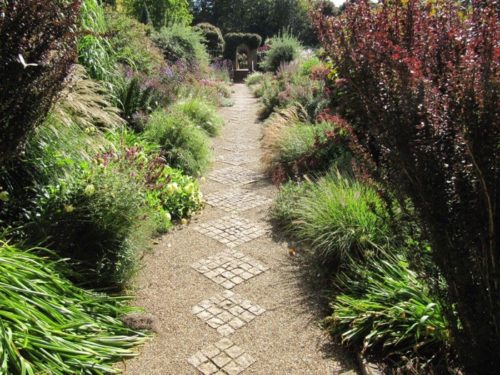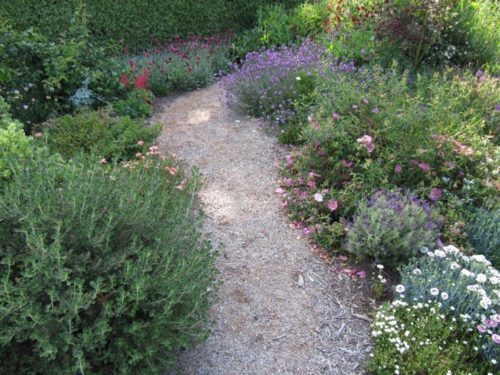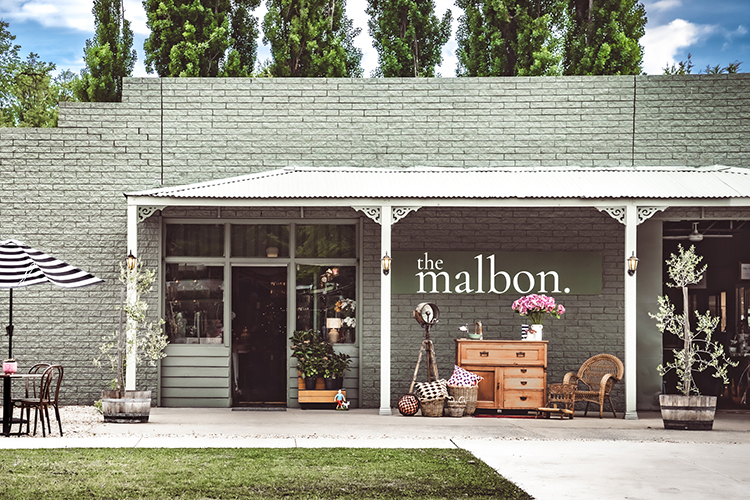
I’M often asked where I get ideas for my column. Well may you ask, having now produced more than 1600 of them since February,1986, initially in another publication.

Often I get ideas from being quizzed at the numerous talks I give to garden clubs, Rotary, Legacy, Probus and others. Or it may be simply driving down a street and seeing a particular tree or garden. Gardening is continually evolving with new plants and ideas.
Homebuyers, whether facing a bare block or neglected garden, will often ask: “Where do I start?”
Before even thinking about plants, a good starting point is paths. Consider the various aspects of the garden: play areas, garden sheds, veggie gardens and clothes line. How do you get to them?

When homes were built in the past, they’d feature a rotary clothes line out back with a very narrow concrete path. The front garden had a straight path leading directly to the front door – hardly inspiring!
Paths need to lead somewhere; mark out lines in the garden to connect all those items mentioned before: clothes line, garden shed, etcetera.
Paths generally are far too narrow. They need to be at least 1.5 metres wide so that two people can walk side by side. While you may not have any residents with disabilities, there could be a time when a wide path is essential.
Next point to consider is the surface. There are many options including concrete, paving, compacted decomposed granite or even eucalyptus chips.

Concrete is possibly the cheapest option, but it has no character and is more or less permanent. I never use concrete in my own garden designs – boring, boring!
Paving looks more attractive and can be laid with a variety of patterns. If at a later date you change your mind or extend the home, pavers can be lifted and reused. Compacted decomposed granite, also referred to as Paddys River gravel, is another practical solution but I always recommend a paver edging to stop it spreading into garden beds. I have used this in some designs to make a circular track through the shrubs for young children to ride their tricycles.
If it is an informal area, such as a bush garden, eucalyptus chip, usually referred to as euky chip, can be used. Over a relatively short period this will bed down and can usually support a wheelchair.
However, it is useless as mulch. If used on a slope, rain runs off without penetrating the soil.
A very natural path can be made of slate paving, with sections left out to grow thyme. There is no limit to the imagination, but keep in mind the width, particularly for paths leading to the front door.
Jottings…
- Garden centres can provide the necessary additive to change the colour of hydrangeas. Now is the time to start but it needs to be applied several times during spring and summer. White hydrangeas will not change colour.
- Don’t be in a rush to remove overnight covering of citrus; there are plenty of frosts to come!
- Start applying mulch to all garden beds to reduce evaporation. It is predicted to be another hot summer.
Who can be trusted?
In a world of spin and confusion, there’s never been a more important time to support independent journalism in Canberra.
If you trust our work online and want to enforce the power of independent voices, I invite you to make a small contribution.
Every dollar of support is invested back into our journalism to help keep citynews.com.au strong and free.
Thank you,
Ian Meikle, editor




Leave a Reply